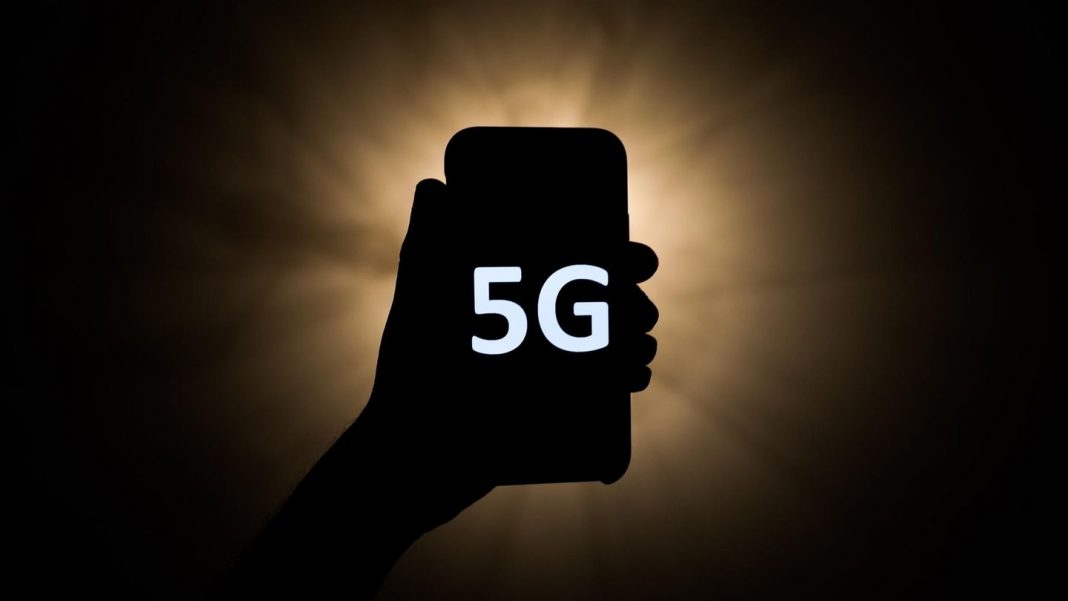Internet of things
“Wireless power network,” researchers spark by 5G juice in devices

Smartphones will not work with the new technology charging
© Jakub Porzycki / Picture Alliance
The “Internet of things” will become more and more devices connected. Now, researchers at the University of Georgia made a bold proposal on how these are to be supplied with power: about 5G wireless. It is not the first attempt of the wireless power supply.
The fridge, the light switch, and the security camera: Smart household items in more and more flats. But the true breakthrough of the Internet of things is yet to come. In the future, even the tiniest of Sensors to be connected to the Internet. One Problem is the power supply. Now, researchers have realized a daring idea: you win radiation power directly from 5G.
The breakthrough came with a special antenna on the Basis of a so-called Rotman lens, reports, researchers at the Georgia Institute of Technology in the latest issue of the journal “Scientific Reports”. It captures high-frequency electromagnetic waves, and can then convert them into a DC voltage. The special feature is that they managed, for the first time, with waves in the 28 GHz Band to implement. And this is one of the wavelengths, which are released for the mobile communications technology in 5G.
Existing energy use
The already well-known principle behind it is called “Energy Harvesting”, which is energy-harvesting translate. The simple idea that In nature and our environment will always be set back to energy, whether it’s due to heat, vibrations or air currents. Succeeds, this energy is similar to that of the Wind or solar energy, it can be directly utilized in a device. One speaks of a nano-generator.
The advantage is obvious: devices may consume energy, without the need to supply you with batteries or a cable extra. One of the oldest and most famous examples of the Energy Harvesting about wrist watches which can be recharged by the arm movements of the wearer’s self, and therefore without changing the battery for the living are.
In order to make the energy of the radiation used, the researchers a smart Trick: A antenna kit gathers the energy and focuses it on the lens in a single rectifier. As a result, the antenna needs to be oriented in a certain direction, says co-developer Jimmy Hester the Portal “Science Daily”. Also, a clear view of the transmitter is no longer required. “This makes them significantly more practical for everyday use.”
Micro-Energy
Who’s dreaming now but magical about 5G-Packed Smartphone, likely to be disappointed. About 6 µW to produce, so far, a maximum of 180 meters distance, a broadcasting tower, the scientists explain. Although this is still an amazing amount of energy, considering that the 5G technology is not designed for the transmission of electricity. But it’s far less than you need for the operation only of smaller technological devices.
Meaningful the operation could be, especially in the case of the smallest Chips to use, such as Sensors on buildings, or large-scale machines. In order to test the applicability of the information, printed, researchers are currently about palm-sized recording surfaces successfully on a variety of surfaces, including flexible and solid materials. You expect the technology to shrink even further, and then in everyday objects obstruct it.
The dream of wireless power
The idea to spark current quasi-over-the-air, is not new. A supplier of electricity in new Zealand is planning to transfer into hard-to-reach regions of larger amounts of power by Tesla beam, instead of consuming Overland masts build. Several Smartphone manufacturers have presented the year-end technologies that Smartphones were also over a distance of several meters and through obstacles without cable contact charging. Not one of them yet the market is ripe. Auto cars should load according to the plans of the company WiTricity soon wirelessly, and only on a special Mat on the ground Parking.
Many questions are open, the Load works especially fast, there are no devices for this. And to be able to really only on the Load of the air to leave, would be the appropriate infrastructure implemented worldwide. Also the question of whether to Use the System at all at a realistic cost-benefit ratio is viable, it is not clear a long time ago.
The big advantage of the new approach compared to the previous, therefore, is that this is not a separately built network is required, but the technique is simply extra energy from the already emerging 5G network with benefits. “5G will eventually be everywhere, especially in cities,” explains the scientist, and a Humboldt research award winner Emmanouil Manos Tentzeris to “Science Daily”. “You could replace millions or even tens of millions of batteries in a smart, wireless Sensors, especially in smart cities and smart agriculture systems,” he says.
Sources: Science Daily, Nature, The Washington Post



